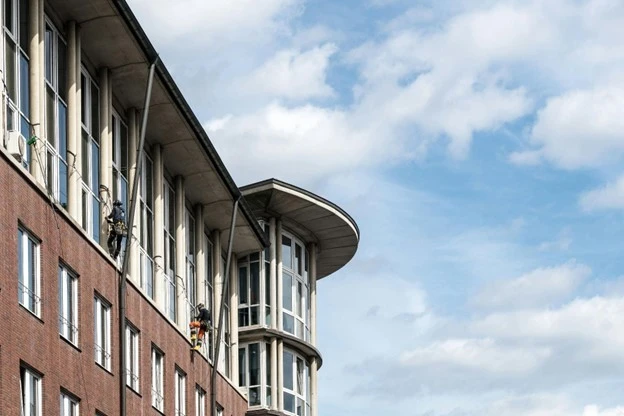In the dynamic realm of industrial safety, remaining abreast of the most effective methodologies and novel breakthroughs is indispensable—especially when tasks are carried out at considerable elevations. This discourse will delve into two pivotal systems—Rope Descent Systems (RDS) and Industrial Rope Access (IRA)—plus an introduction to ‘Safety in the Sky.’ This comprehensive approach accentuates not mere physical safety, but also mental well-being and respiratory health.
Unlocking The Mysteries Of Rope Descent Systems (RDS)
Rope Descent Systems, or RDS, are integral for activities demanding controlled descents from notable heights. Such systems equip workers with the means to securely rappel down structures while executing tasks encompassing window cleaning, painting, and maintenance.
The Cornerstones of RDS:
Controlled Descent: The quintessential benefit of RDS lies in providing a controlled descent, thus reducing the danger of falls.
Portability: The RDS apparatus is relatively lightweight and transportable, paving the way for easy worker mobility and assembly.
Versatility: Fit for diverse tasks, RDS can be deployed across a variety of environments, from modern skyscrapers to industrial structures.
Decoding Industrial Rope Access (IRA)
Industrial Rope Access (IRA) revolutionizes work at heights by enabling workers to reach otherwise unreachable areas. IRA, unlike traditional scaffolding or mechanical lifts, employs ropes and specialized equipment from the likes of Shine On Anchors to ensure safe access to lofty or confined spaces.
Gains From IRA:
Efficiency: IRA facilitates swift access to hard-to-reach areas, trimming downtime and bolstering productivity.
Cost-Effectiveness: With scaffolding needs drastically reduced, IRA can notably slash operational expenses.
Minimal Impact: IRA’s adaptability causes limited disruption to ongoing operations, making it well-suited for a spectrum of industries.
‘Safety In The Sky:’ A Comprehensive Approach
While the physical safety of elevated workers is of utmost importance, a comprehensive approach to ‘Safety in the Sky’ extends beyond the mere provision of harnesses and helmets.
Physiological Safety:
Anchors: Secure anchorage points are of paramount importance. Regular scrutiny and appropriate maintenance of anchors forestall mishaps.
Comprehensive Instruction: In-depth training initiatives assist workers in harnessing RDS and IRA equipment safely and effectively.
Equipment Upkeep: Routine checks and maintenance of equipment certify its optimal functioning, thus curbing the risk of failure.
Psychological Well-being:
Stress Management: Height-related tasks can induce anxiety. Provision of mental health assistance and stress management resources aids workers in maintaining focus and tranquility.
Transparent Communication: Sustaining open communication channels alleviates uncertainty and anxiety among employees.
Respiratory Wellness:
Air Quality Surveillance: The quality of air in industrial settings may be substandard. Monitoring and safeguarding clean air supply is fundamental for respiratory health.
Protective Armor: Utilization of suitable respiratory protective gear protects workers from deleterious airborne particles.
Optimum Practices For Height-Related Tasks
To assure maximum safety during elevation-related tasks, the following best practices should be employed:
Comprehensive Risk Evaluations: Highlight potential risks and enforce measures to palliate them.
Redundant Safety Arrangements: Activate backup systems to guard against accidents due to a single point of failure.
Routine Safety Drills: Carry out emergency response preparations to ready workers for unforeseen circumstances.
The amalgamation of RDS and IRA into industrial operations signifies a momentous evolution in height-related work practices. By embracing the ‘Safety in the Sky’ ideology, which encompasses physiological safety, mental well-being, and respiratory health, safety professionals can foster a more protected and efficient work atmosphere. Solid anchoring and commendable work practices are pivotal to preventing mishaps and guaranteeing the safe return of every worker at the day’s end.
